But he took the wee baby seal by the flipper. “You little rascal!” he said. “You’ll grow up some day to be a big seal and then you’ll destroy my net if I’m still here.” And he took the wee baby seal, hit its head against a rock, and threw it among the seaweed on the shore. —The Silkie’s Revenge
The pleasure of a library sale is that of a second-hand bookshop – the pleasure of serendipity, of finding what was unlooked-for. Thus I never miss any that are held at my beloved American Library in Paris.
“Come oot,” he said, “I want to show you something!” “What is it?” she said.
“Come here, come here. I want to show you something! Look!” he said to his wife. He opened the door of the byreand he showed her — there was the cow and there was the bonnie wee calf standing at her feet, there was the pail of water and there was the hay in her wee heck at her nose, and the cow was as healthy as could be and so was the calf! —The Broonie on Carra
At last month’s sale, I took in my haul the following wee book, paid for at the price of 1 euro– one of the better purchases I have made as a collector:
The Broonie, Silkies and Fairies is a collection of traditional oral tales from the travellers of western Scotland, a folk of nomads like the tinkers of Ireland or the Rom/ Gypsies, as told by traveller Duncan Williamson (1928–2007).
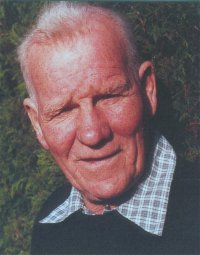
“I was reared, born and bred on stories. That’s all I had in my life.”– Duncan Williamson
Every day she used to go hawking with the old woman too, selling her basket and tinware to the houses.
So one day she says, “Mother, dae ye never get fed up on the sea? Dae yese never go on the roads?”– Saltie the Silkie
From Williamson’s obituary in The Guardian:
Duncan was born in a tent on the banks of Loch Fyne, near Furnace in Argyll, the seventh of 16 children. Neither parent could read or write, but pipers, singers and storytellers on both sides of the family were testament to a rich oral culture. His father, a basketmaker and tinsmith, was determined that his children should get a basic education, and Duncan went to school in Furnace until, at 14, he was apprenticed to a stonemason and drystone-dyker, Neil MacCallum, who told him stories in English mixed up with words and phrases in Gaelic. A year later, he left home with an older brother, travelling all over Argyll and Perth. He worked as a farm labourer and became a horse dealer.
Duncan first heard stories and songs within the family, including a version of the classic supernatural ballad, Tam Lin, from his grandmother, Bet McColl. Duncan recalled his father’s storytelling in the introduction to his own collection of stories, Fireside Tales of the Traveller Children (1983). He knew his father was telling him something that “was going to stand us through our entire life”, and even though they may have had no food to eat, “we were full of love of our father’s voice”. He also recalled listening, at the age of 24, to an old man telling stories from 10 o’clock at night through to six the next morning. Such was the power of the storytelling culture of the Travellers. — Derik Schofield
It looked up and shook its fist. “Ye finally found the answer, but” it said, “many’s the night when I lay in your bosom and cuddled ye, I cuid have done terrible things to you– curse upon you! And curse upon your old postman!” Like that– he was gone. Gone, disappeared for evermore. — The Taen-Away
In the sixties, Williamson was discovered by folklorists, who recorded his tales for Edinburgh University; transcriptions of these stories were compiled into a series of books, such as the present one; it was published in 1985 by Canongate Publishing Limited, of Edinburgh, Scotland.
And the wee son used to say, “Daddy, why is it when you come to the bridge that you always push the pony past? I’d like to see the bridge and I’d like to see the river, I would like to see the steps going to the pool.’
“Son”, he said, ‘wheesht! You don’t know what I know… the Broonie lives in there! And these are his steps, he is in that pool — that’s why I hurry the horse past them.” — Torquil Glen
( The above drawing was printed upside-down in my copy!) These are tales of the supernatural– of fairies and the shape-shifting seal-folk, the Silkies; of changelings and sea-monsters; of the Broonie, the magical creature that rewards the generous and punishes the miserly.
I had no time for breakfast, I was so sad. I said, “Prob’ly she went out swimming and she got drowned.” And I was so upset, I didn’t know what to do. I searched the island, I went down the steps, searched the lighthouse outside and inside. She was gone, there was no Rona. — The Lighthouse Keeper
However delightful the tales, though, my purchase was prompted by the charming illustrations of Scottish illustrator Alan B. Herriot. And no small part of that charm is owed to Herriot’s masterful use of a now all-too rare illustrative technique: silhouette drawing.
And the King stood before Archie. “Archie, I’m sorry. You’ll hev tae move away from here.”
And Archie said, “Why should I move away from here?”
“Well,” he said, “you can move or you don’t need to, because we are gaunnae have a party here.”
And Archie said, “Who are youse?”
He said,”Archie, you ought to know who we are! Archie, we are the Little People, we’re the fairies! This is the day we’re going to have wir party here!” — Archie and the Little People
Nowadays, Alan Herriot is primarily a painter and sculptor in a naturalistic vein, author of several public monument statues.

Alan Herriot (right) in his studio
Worthy though these projects may be, one regrets the loss of the lightness and mystery, of boldness allied to delicacy, these illustrations from his youth so beguilingly set forth. Look again at the drawing of Archie and the Little People. The silhouette technique ‘sells’ the magic; by withholding visual information, the artist teases– and awakens– our imagination.
She said, “Auld man, my husband says ye’re hungry”
“Yes, my dear, I’m hungry.”
“Well,” she said, “would ye accept this bowl o’ soup?” —The Broonie’s Curse
Silhouette art goes back to the origins of human kind; it was found in the ten-thousand-year-old cave paintings of Lascaux; it was prominent in the murals of Pharoah’s Egypt; it reached a high degree of perfection in ancient Greek pottery. But its true apex came in the 18th century, when it was the commonest form of portraiture– as seen in the example below:

…occasionally involving quite complex group compositions :
This ascendancy declined in the 19th century with the coming of photography– although silhouette portraits by no means disappeared; below is depicted the poet Longfellow, by August Edouart:

And even today, silhouette portraitists ply their craft on seaside docks and at country fairs.
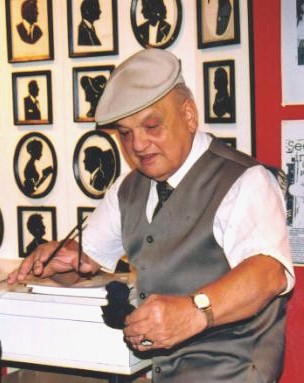
John Ross, a sihouette artist who employs the traditional technique of paper cut-outs
The silhouette has also been much used in the performing arts, whether in the Wayang puppet theatres of Java and Bali:
(French-language documentary and demonstration of Javanese Wayang) video here.)
…or in the cinema, as in the animated films of Lotte Reininger; this still is from her Adventures of Prince Ahmed:
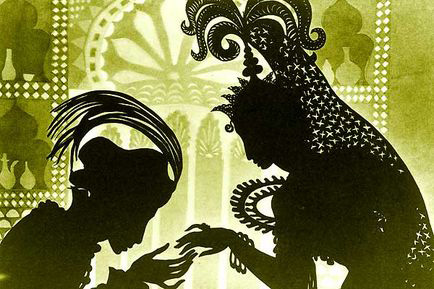
Here is a video extract from ‘Prince Ahmed’
And this man said, “You have come here to stone the seals– we are the seal-folk and you have come here tae destroy hus. Ye meant…everything ye intend tae do is upon hus. So we cam here tonight tae do the same thing tae you.”–The Fisherman and his Sons
Illustrators have always prized the delicate possibilities offered by the silhouette, with work by Aubrey Beardsley and Edmond Dulac among the choicest; here are two illustrations to Cinderella by the mighty Arthur Rackham–(thanks to Noah Berlatsky for supplying them):

Below: Illustration for ‘Arabian Nights’, by contemporary artist Angel Dominguez
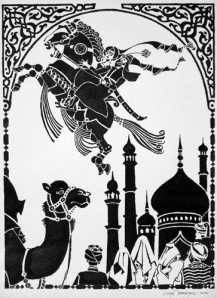
Today, this tradition is carried on by artists such as the witty Kara Walker:

In the press, silhouette vignettes were a useful design element in layout, for vignettes and colophons and headers; and examples can still be found in today’s New Yorker.
“Ye’re washin yir feet?” said the fisherman.
“Yes,” said the tramp, “I’m washin my feet. Because the day is hot.” — The Tramp and the Boots
In comics, silhouette work is generally punctual– to show a character is in the dark:
Christophe, ‘La Famille Fenouillard au Japon’, 1893 (click to enlarge)
…or as a simple way to vary panels:
Wallace Wood, ’22 Panels that always Work’: a guide for his assistants
…or as a dramatic graphic device, as widely employed by Frank Miller:
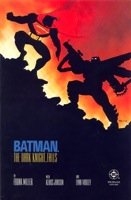
Do we need more than this to know that Superman fights Batman?
Silhouettes, which deliberately withhold visual information, work well with visually stereotyped images of the type superheroes provide. An interesting use of silhouettes was pioneered in the obscure DC comic Strange Sports Stories: they made excellently speedy transition panels:
It is a pity the sihouette is not used more, as its aesthetic is well compatible with that of cartooning; to my knowledge, the only contemporary cartoonist who regularly uses silhouettes in continuity is Stéphane Blanquet:

From Blanquet’s ‘La Vénéneuse aux deux éperons’
I would be grateful for any others the reader can point out to me.
He walked down to the beach, there she was sitting and about fifteen or sixteen seals were all gathered round her. He rushed down to the shore and caught her by the arm, he dragged her back to the house. — The Crofter’s Mistake
I love the use of negative space in the above drawing.
“And remember: some day this farm will pass on tae you but promise me, as long as you own this place ye’ll never part with those breeches, or that coat or thae hose!”
“No, Daddy,” he said, “I never will.” — The Broonie’s Farewell
Duncan Williamson:
All my stories I’ve told you these past years belong to dead people– they’re all gone. And that’s why I want to tell them to you and to the world, because some day I’m not going to be around and I want people to remember and enjoy the stories that were passed down from generations of people, from the West Coast to Aberdeenshire, through Angus to Perthshire, down into Ayrshire, around the Borders, and all over– these beautiful stories that were not written down. All these stories are a matter of teaching, to show what can happen to you if you are evil and bad or good and kind. Because the travellers have met with so much badness, so much opposition and persecution along the way in their lives, even the thought of badness in their minds disturbs them. They believe that nobody in the world has any reason to be bad. They never hurt anybody. They live their own lives, do their own things and want to be left alone — like the seals.
As of October 2010, over 3000 travellers — ‘gens du voyage’ — have been deported from France…
(click to enlarge)
Extracts from The Broonie, Silkie and Fairies copyright the estate of Duncan Williamson
Illustrations for The Broonie, Silkie and Fairies copyright Alan Herriot
Alan Herriot’s Website. Duncan Williamson’s obituary from the Independent.
Two beautiful silhouette animations by Lotte Reininger:
The Little Chimney Sweep
Cinderella
They are well worth a wee peek , lassies and laddies.
Finally, the gifted young artist and cartoonist Eroyn Franklin deserves a look. Mark how she uses reverse silhouettes (I.E. white-on-black rather than black-on-white). Thanks to Sean Michael Robinson for finding her.

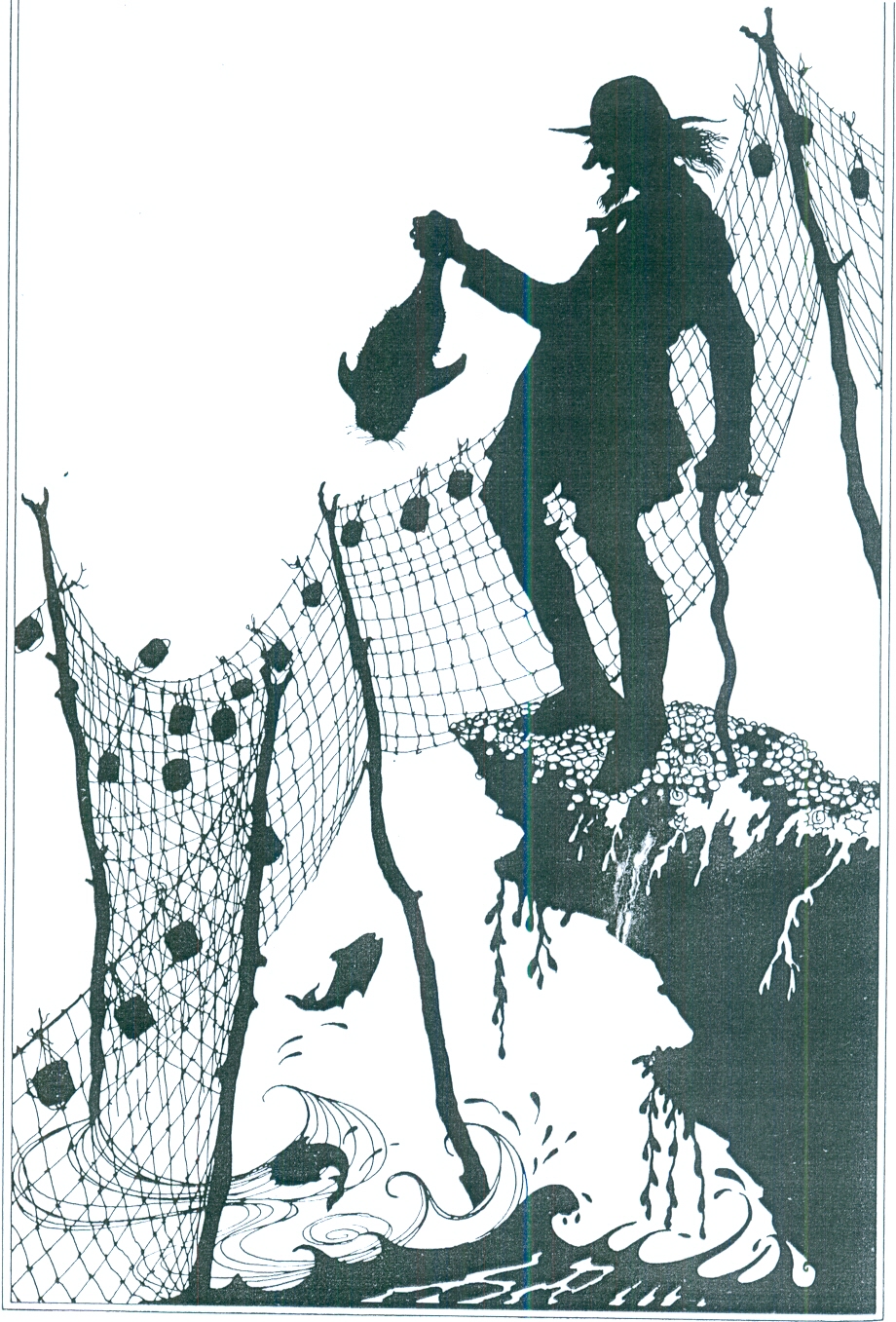

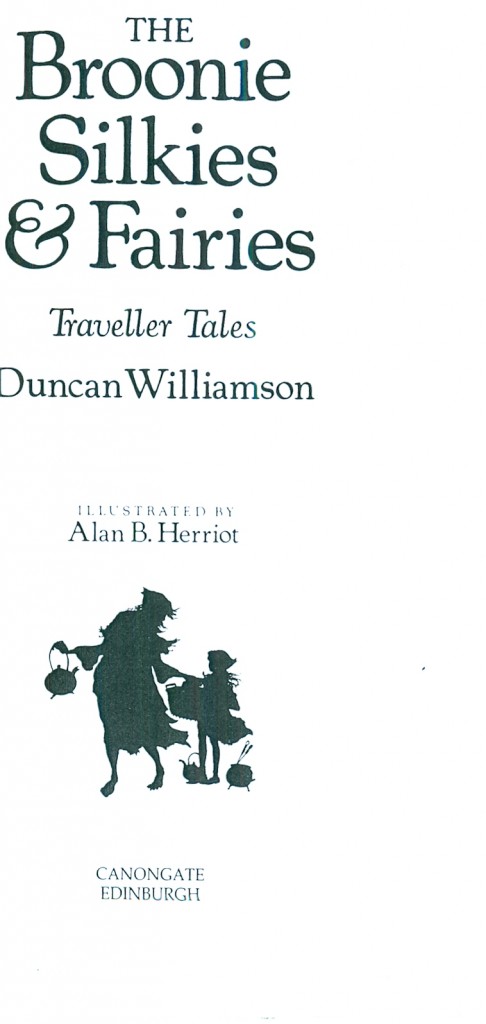

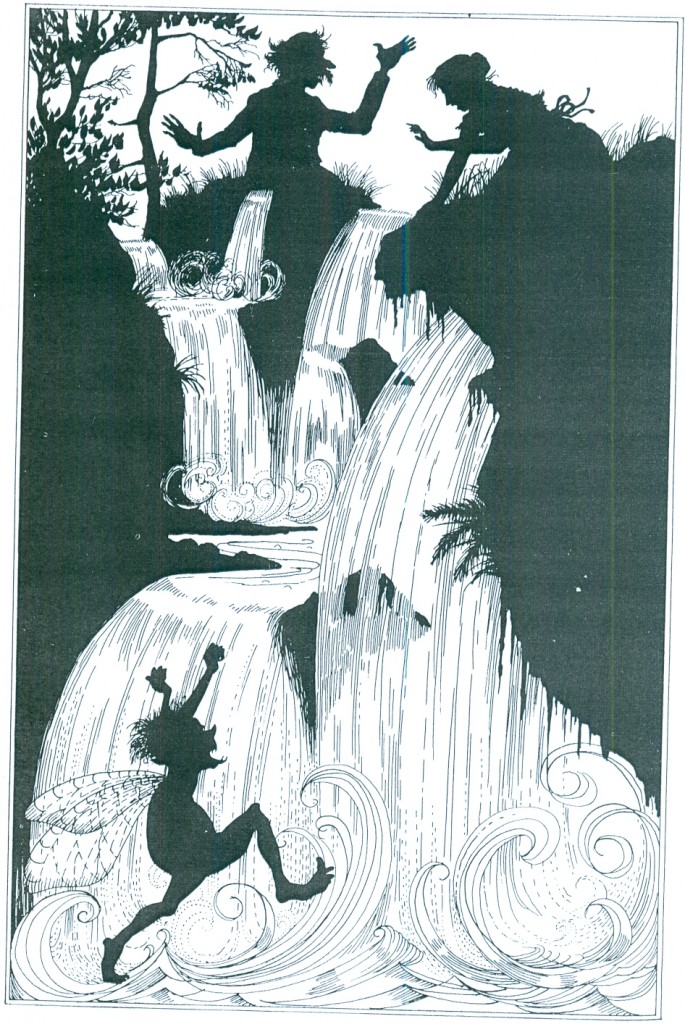
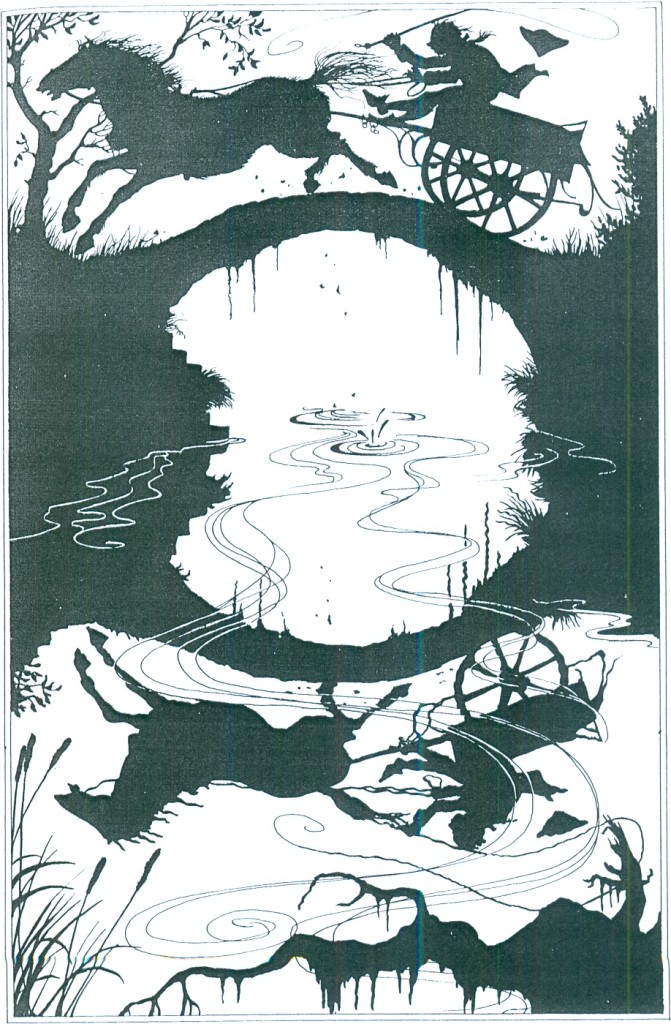
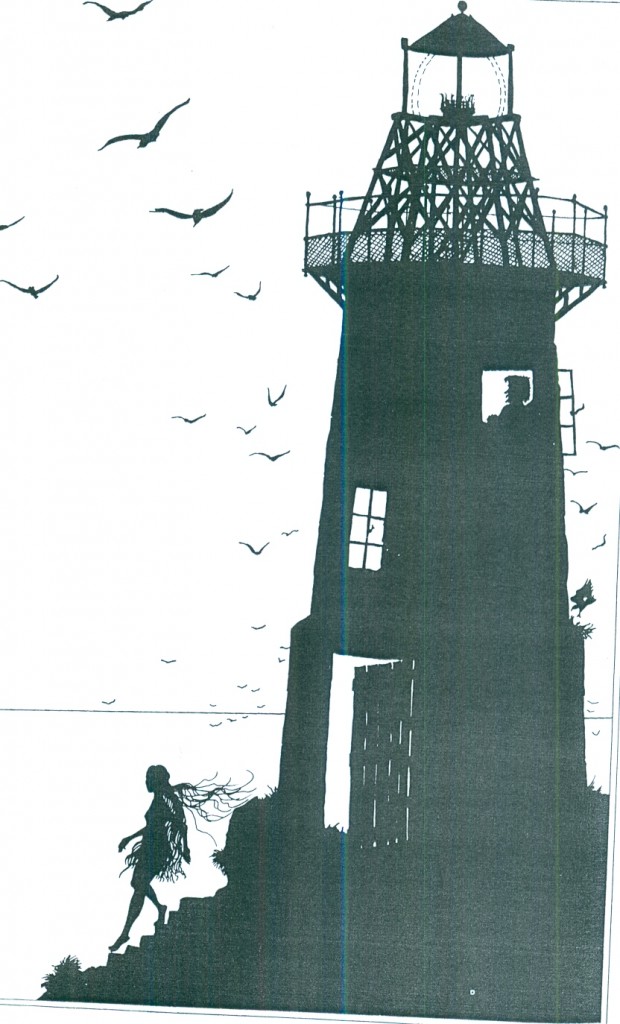

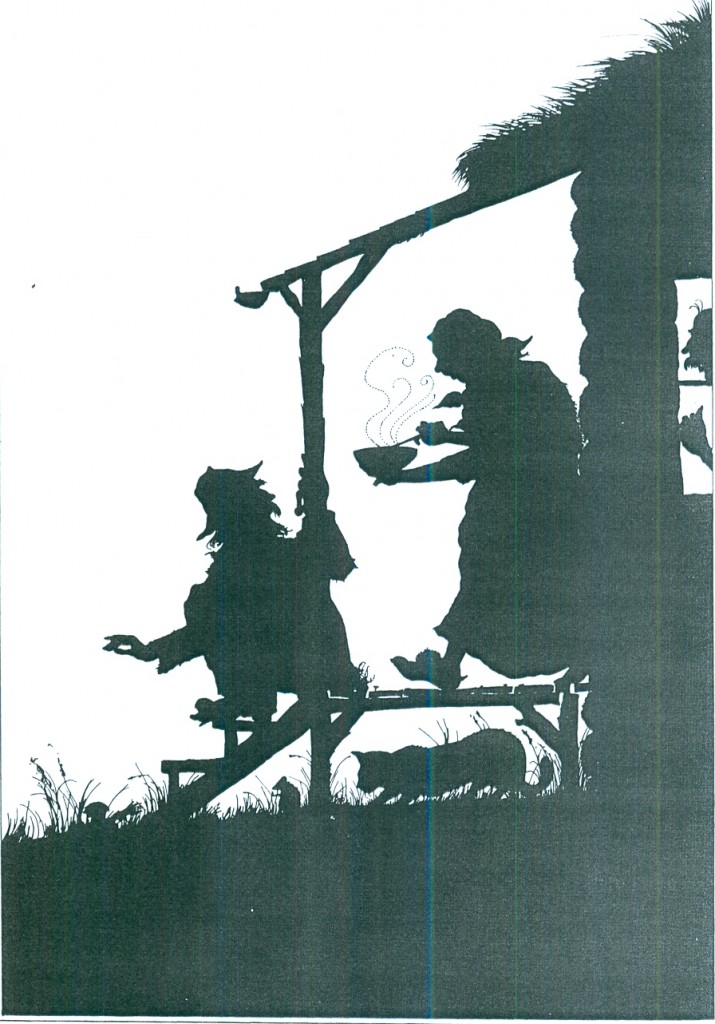


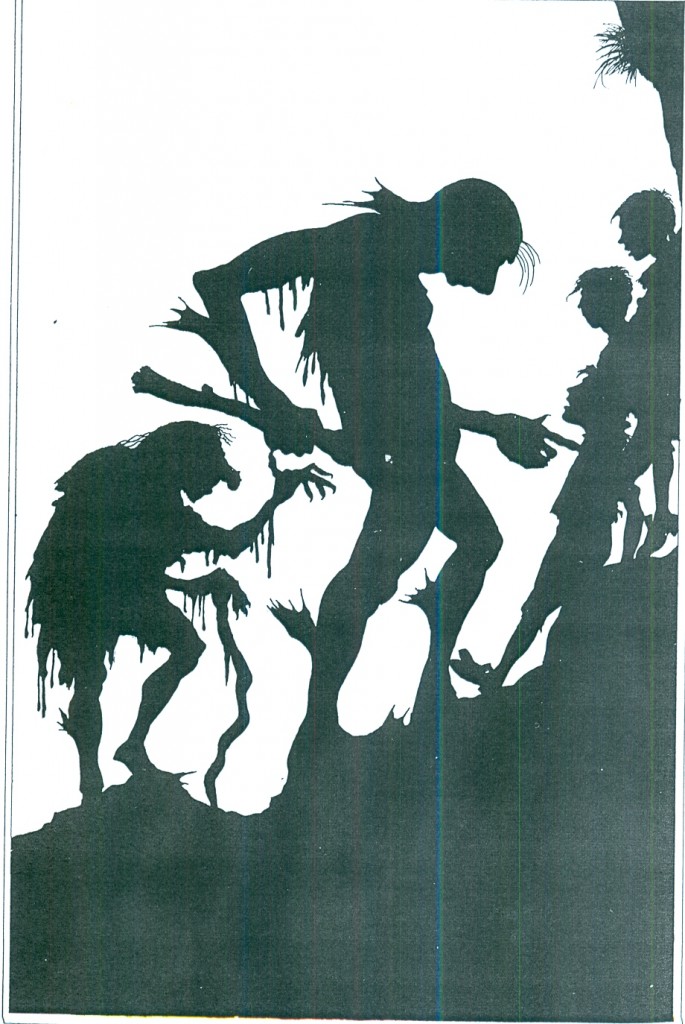
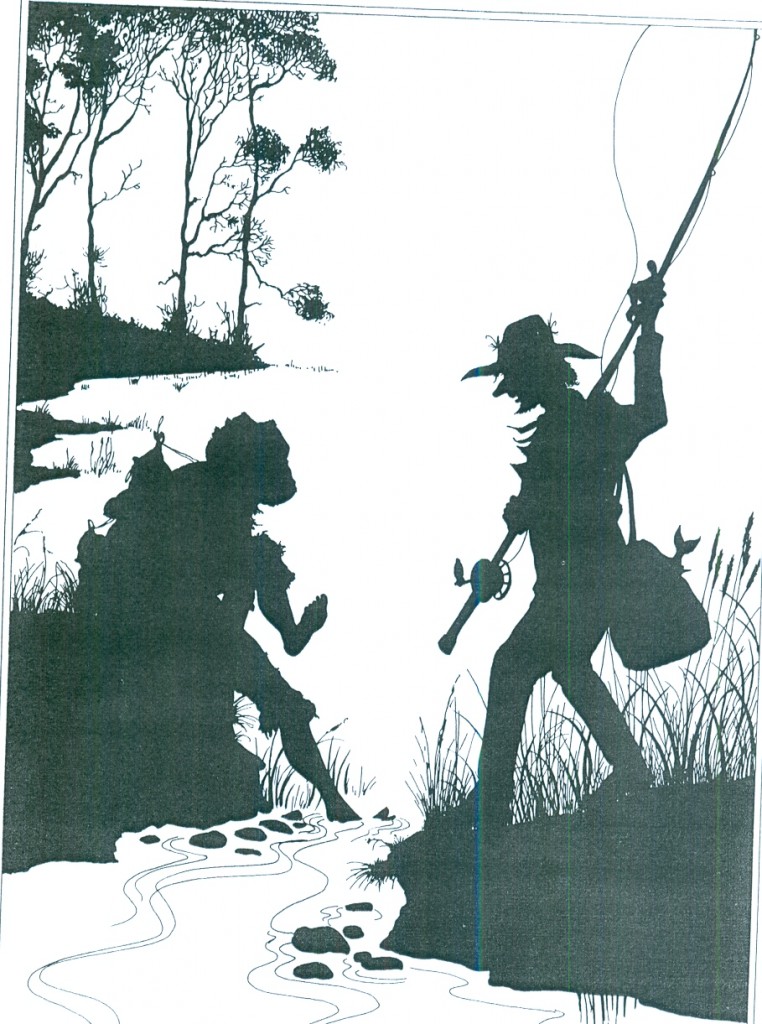
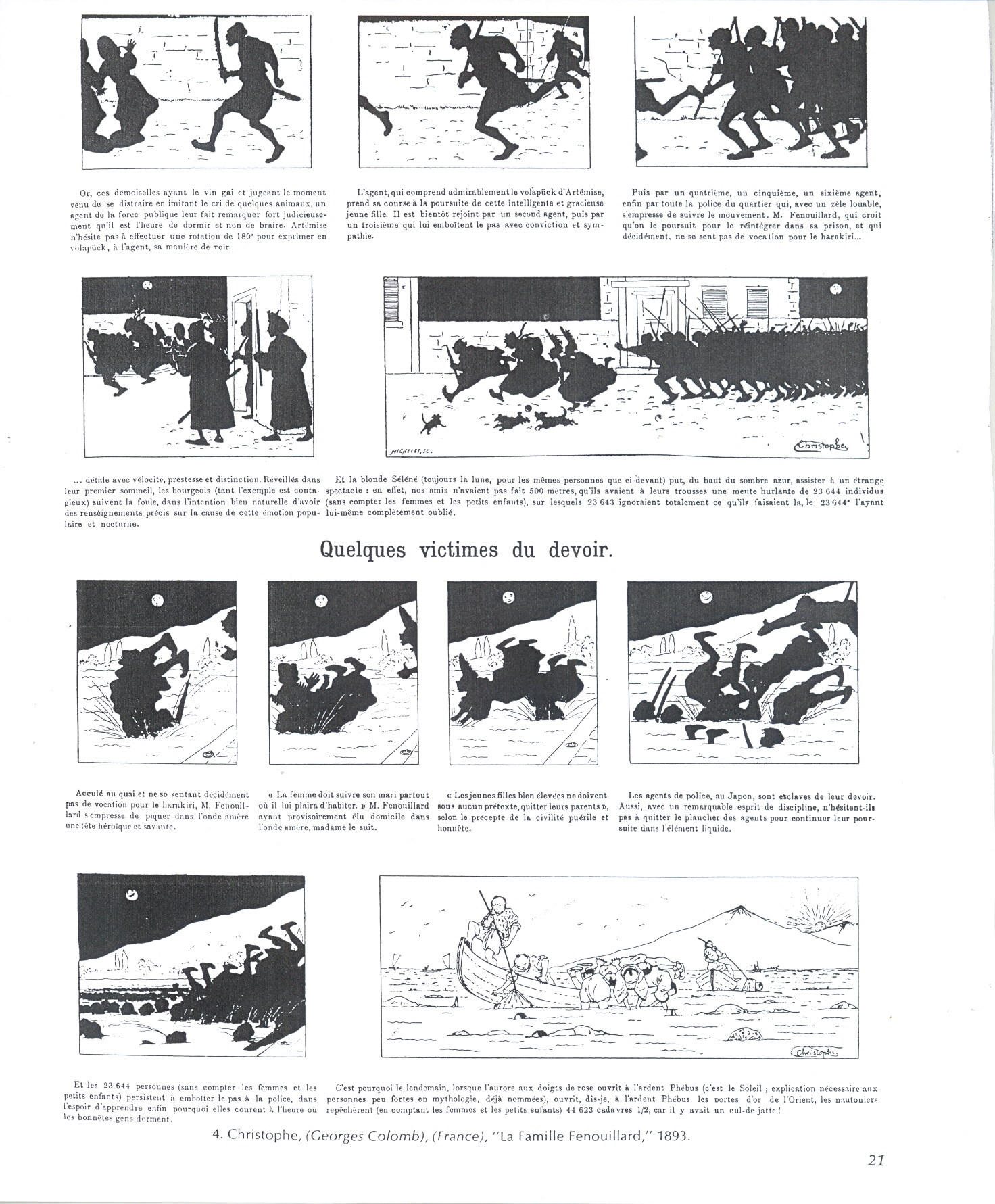



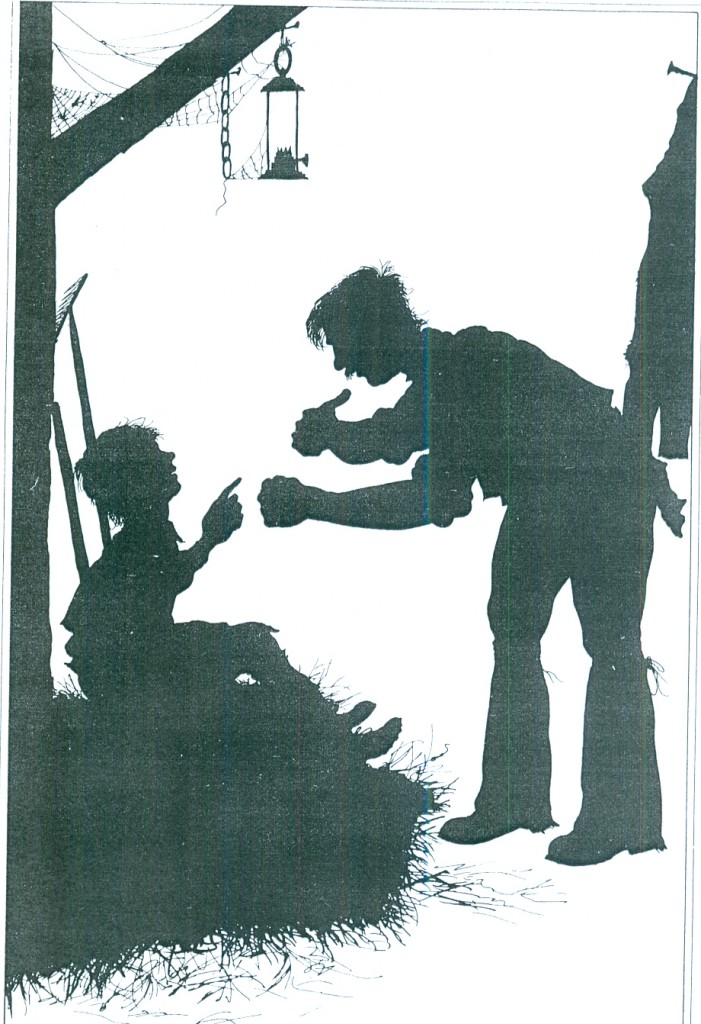

Okay, I may need this book.
Some beautiful scans, and once again interesting possible directions for an enterprising cartoonist to take up. Saw this today and was thinking about a silhouette comic, and have continued to think about architecture as structure in comics, and completely unrelated to these two thoughts, saw the website of a cartoonist I met this weekend at a 24 hr comic Seattle event-
http://eroynfranklin.com/
And what do you know, I check out her website, and there’s links to comics she’s done solely with silhouette, and one solely about people walking their neighborhood talking about social and temporal change through the lens of the architecture of their neighborhood. O delightful coincidence. Anyway, thought I’d share.
And please keep it up! I’ve been enjoying your posts immensely.
Thanks, Sean. I’ll chack out that link.
Naomi, I don’t know if it’s still in print but a google search turns up lots of old copies for sale…
If you’re looking for silhouette work, I’d encourage anyone to check out the two books of fairy tales Arthur Rackham illustrated. They’re amazing.
The best known current practitioner is fine artist Kara Walker. Be warned; her work is fairly disturbing.
Oops! Alex added Kara Walker at the end I see!! Never mind…carry on!
Noah, I’m going to be shameless and add Rackham to the post! Thanks for the tip.
The same goes for Sean! I really liked eroyn’s stuff.
Can I just reiterate– that none of you will regret watching the Lotte Reininger videos I linked to. They are enchanting and lovely.
And I have just realised how timely this is– given the shame of my country’s (France’s) current persecution of its own travellers, the Rom.
(…and have updated the post accordingly.)
Do you know The Shape of Me and Other Stuff by Dr. Seuss?
It uses silhouettes in different colors which I think is interesting (and which i’d like to use someday too…)
http://www.amazon.com/Shape-Me-Other-Stuff-Surprising/dp/0679886311#reader_0679886311
No! I’ll have to look that up…like everyone, I was raised on Dr Seuss!
I wasn’t raised with Dr Seuss… being from Europe… but dr. seuss is becoming more popular here (now i can buy it for my children!)